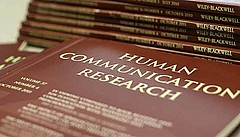New study on cyberbullying published [08.01.15]
In recently published study, Ruth Festl and Michael Scharkow (University of Hohenheim) and Thorsten Quandt (University of Münster) examined potential predictors of cyberbullying envolvment.In this study, the authors focused on the relevance of social influence to explain cyberbullying experiences among German high school students. Social influence is discussed in the context of computer-mediated communication. To obtain individual and sociostructural data, a survey study among German high school students (N = 4,282) was conducted. Using multilevel modeling, the results show that the attributes of the school class only contributed to the risk of being involved in cyberbullying to a small extent. Still, procyberbullying norms in class did enhance the risk of perpetration and victimization for students, even more so than their individual beliefs. Previous experiences with bullying and intensive, unrestricted use of the Internet were the strongest individual predictors of cyberbullying involvement.
More information and the whole article can be found here (Human Communication Research).

